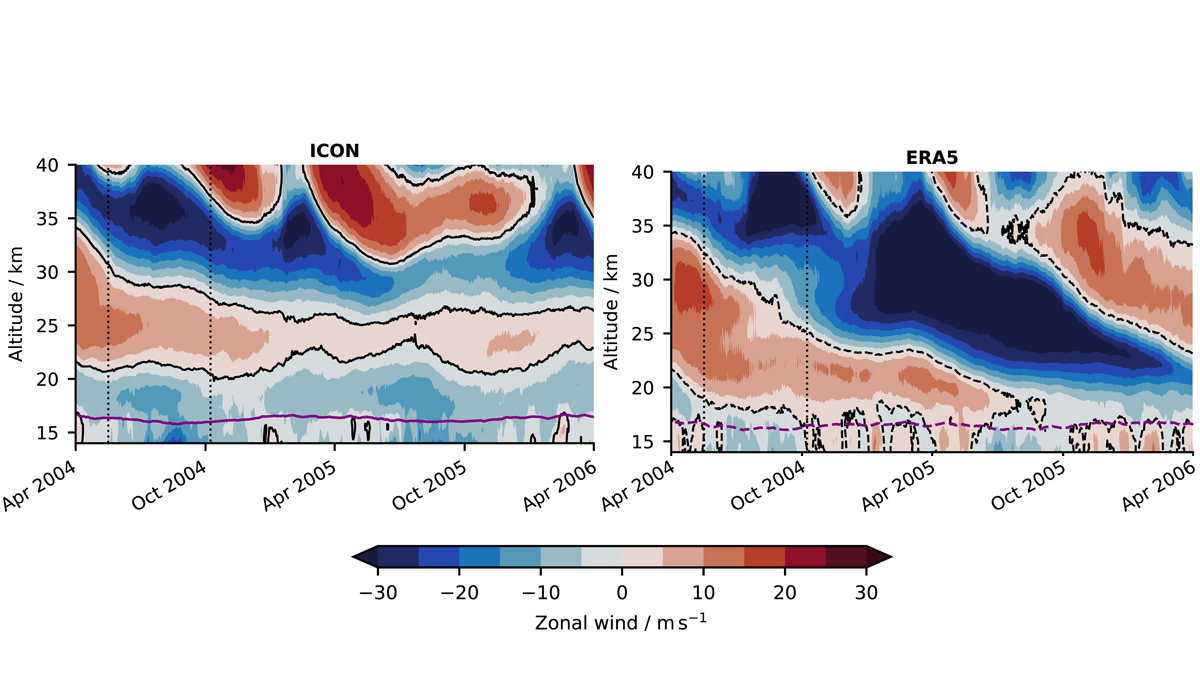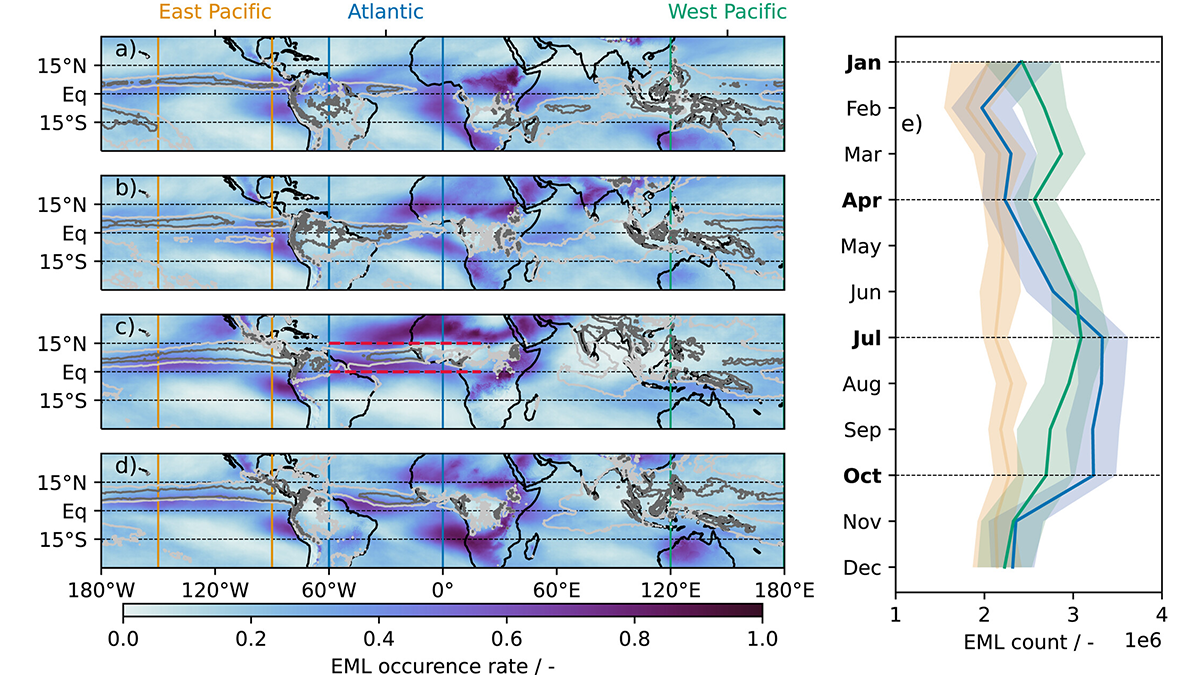A new study shows that a kilometer-scale model can directly simulate aspects of the Quasi-Biennial Oscillation.
tropics
Tropical Congestus Clouds Explained by Water Vapor Spectroscopy
A new study demonstrates how the abundance of congestus clouds in the tropics can be explained by the water molecule’s discerning appetite for infrared radiation.
Mars and Earth: A Tale of Two Energy Budgets
The first view of Mars’ latitudinal radiant energy budget reveals stark contrast with Earth’s energy distribution, offering new insights into each planet’s unique energy dynamics.
Characteristics of Moist Layers over the Tropical Atlantic
In a new study, characteristics of elevated moist layers, their seasonality, spatial distribution, structure, and the coupling of mid-tropospheric circulation and convection are examined over the tropical Atlantic.
Next NASA Field Campaign Could Fund Projects in Drylands or Tropics
Scientific feedback can improve proposals and signal support for large-scale, intensive climate research.
Does Soil Sound Different After It’s Burned?
Yes, but not quite the way researchers expected it to.
Measuring Methane Stemming from Tree Stems
Wetland tree stem emissions have emerged as a significant contributor to the global methane budget. A new study tracks how they vary by season, location, and hydrological conditions.
More Than Half the World’s Ocean Surface Is Getting Greener
Advances in data analysis help researchers spot shifting ocean colors, which could be associated with climate change.
A 150-Day Periodicity is Revealed in the Southern Extratropics
An internally generated 150-day periodicity is newly identified in the Southern Hemisphere extratropical large-scale atmospheric circulation, which arises from the annular mode’s propagating regime.










